Blog
Be it any home, the kitchen is undoubtedly the most engaging corner of it. It is the place where not only the food is cooked but also people get into endless conversations about their lives. Not only do kitchen countertops make it easier for people to perform various activities, but they also play a vital role in keeping things organized and accessible.
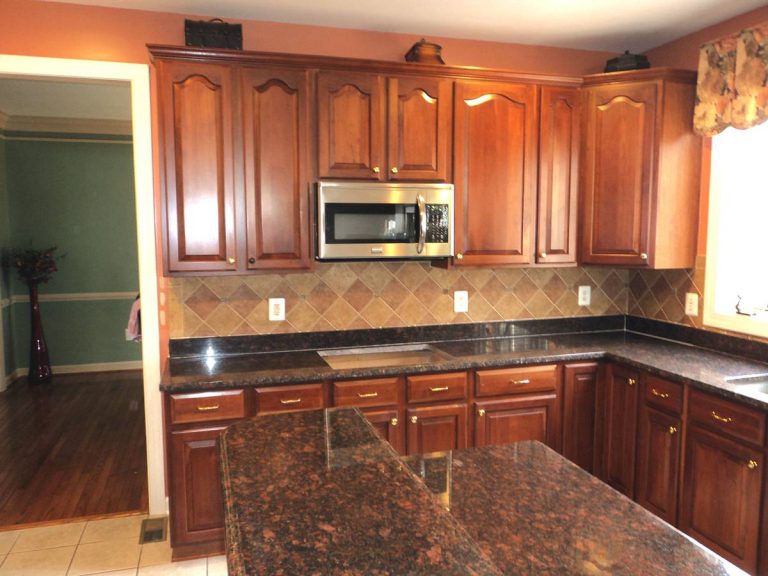
Now, when it comes to choosing the right kitchen countertop, there are different countertop materials available to choose from. Let’s find some of the most popular countertop materials architects, construction contractors, and homeowners prefer to choose from.
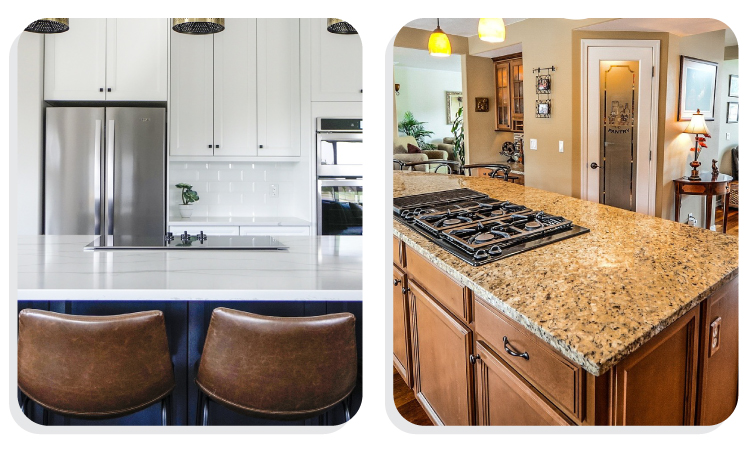
Quartz
Today, quartz is one of the most popular kitchen countertop materials. Quartz is a type of manufactured stone formed by mixing powdered quartz particles with resins. Because of its low maintenance and good durability, it is one of the most useful countertop materials. Quartz requires no additional care, such as sealing, and is simple to clean.
The best thing about quartz is that it resembles granite, marble, and other natural stones. In addition, it comes in a wide range of hues, designs, and patterns. Today, a majority of natural stone manufacturers prepare countertops made of natural stone.
Engineered quartz is one of the most durable countertop materials available. It does not need to be sealed and is very stain resistant due to its minimal water absorption.
Granite
Granite is the most durable natural stone available in slabs that can be cut to size to match any kitchen countertop requirements. Granite countertops are heat and scratch resistant, and available in hundreds of different hues and designs. The material, however, is porous and must be sealed. This easy preventive measure can help avoid stains and keep the stone’s luster.
Because each piece of natural stone is unique, no two granite countertops will be identical. Granite can have a regular pattern or veins and swirls. The variety of colors and patterns available will offer homeowners the unique appearance and feel they desire.
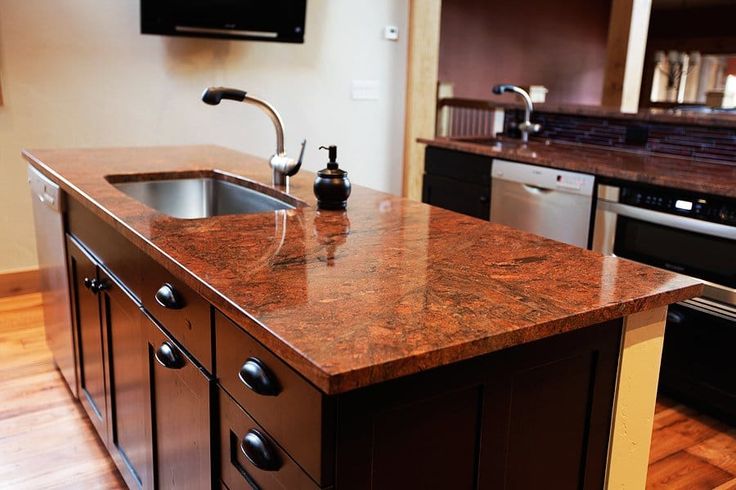
Granite’s amazing durability is one of the reasons it is such a popular option. Hot things may be placed directly on granite countertops, making them one of the most practical countertop materials. Although cutting straight on the granite surface is possible, it is not recommended because it can dull the knives’ blades. Professionals recommend sealing granite countertops every 6-12 months.

Source:- Pinterest
Marble
Marble is a classic kitchen countertop material with a magnificent look. This natural stone is inviting and full of personality. Marble countertops keep cold even in the heat of summer, which may tempt you to switch on the oven during a heat wave. However, marble is not the easiest surface to keep clean. It’s porous and soft, and like granite, it has to be sealed to avoid discoloration. To avoid etching, acidic items like citrus juices, wine, or milk should be washed up quickly. Marble is also soft, which makes it prone to chipping and scratching; yet, these flaws provide it a lovely appearance over time.
Marble slabs are available in a variety of hues, with varying degrees of irregular veining. Classic marble kitchen countertops are frequently white with faint grey veining, although beige, brown, and black alternatives are also popular.
When it comes to natural stone countertops, marble is one of the softest alternatives. As a result, it is more prone to get scratched, dinged, and soiled with frequent use. Marble is available in both polished and honed finishes. Honed marble has a dull surface that conceals some blemishes and etching. Polished marble is more lustrous and stain-resistant than honed marble.
Quartzite
Quartzite, not to be confused with quartz, is a natural stone with a neutral tint and flowing veins reminiscent of marble. It’s heat resistant, but like marble, it needs to be sealed on a regular basis. Most quartzite kitchen countertops have a gleaming surface because light reflects off the quartz crystals in the stone.
Quartzite countertops are commonly white with grey tints. The stone is generally light in color and may have slight rose or blueish undertones. Veining can range from extremely mild to highly noticeable. Quartzite’s usage as a countertop material is new, but it’s swiftly gaining market share as an alternative to marble.
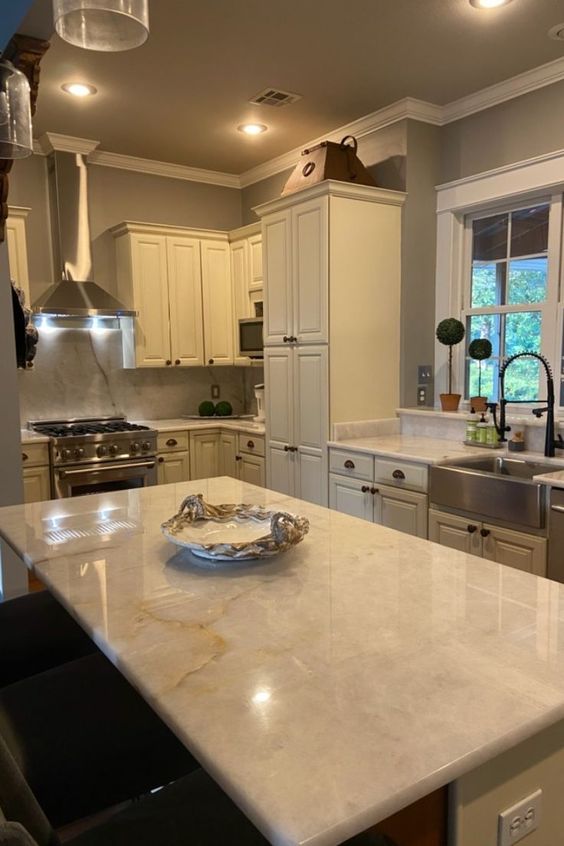
Source:- Pinterest
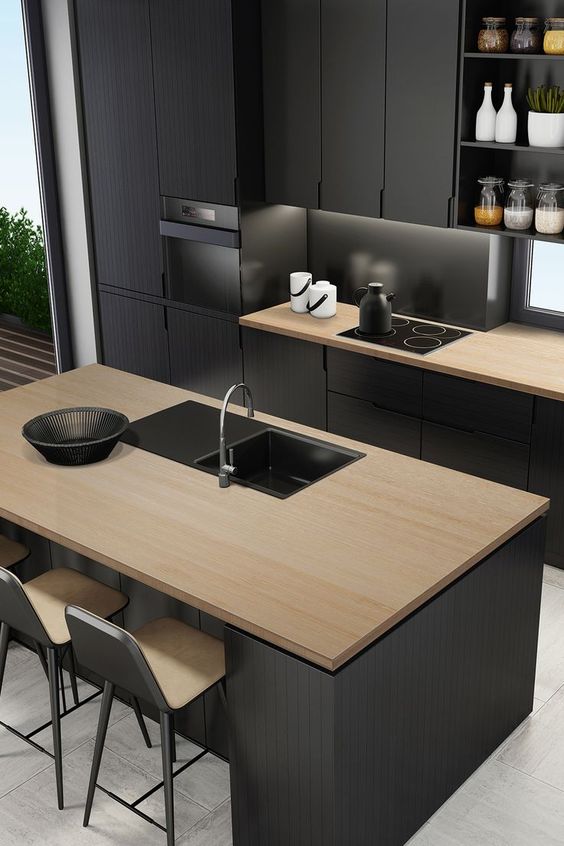
Source:- Pinterest
Bamboo
Many individuals are opting for this eco-friendly choice for their kitchen counters. It is a rapidly growing natural material, making it one of the greenest countertop options. It is tougher than wood and is sometimes likened to steel in this regard. Bamboo countertops are inherently anti-bacterial, but they must be treated on a regular basis to combat discoloration and keep their pristine appearance.
Bamboo grasses have a thin appearance and must be fused together to form a solid surface. They may be put together in a variety of ways to bring interest to the countertop with different patterns. Countertop surfaces are available in vertical grain, horizontal grain, end grain, and strand-woven styles. The grain and design give your home a modern, natural, and clean look.
Concrete
Though concrete looks more related to a warehouse or industrial setup, this low-maintenance material is becoming an ideal choice for kitchen worktops. It’s not spectacular, and other colors and finishes may be added to keep your tabletop surfaces from looking like a sidewalk. Concrete is also ecologically benign because it is made out of renewable components like rock, sand, and cement. It may be personalized with a variety of colors and patterns and can withstand heavy use.
Concrete may be polished to resemble practically any material. It can be made to seem like genuine stone or marble, or it can have a smooth, homogeneous appearance. It isn’t always flawless, and its charm resides in its flaws. You may have it polished to a mirror-like sheen or add fragments of other materials to give diversity or glitter.
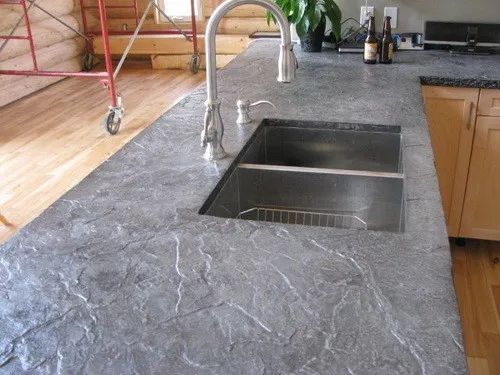
Source:- Pinterest
Because concrete is porous, it must be sealed in order to avoid bacteria development and stains. Some finishes are more prone to water and flood damage than others. Hairline fractures in concrete are also possible. However, if properly placed and maintained, it is one of the hardest kitchen countertop materials available.
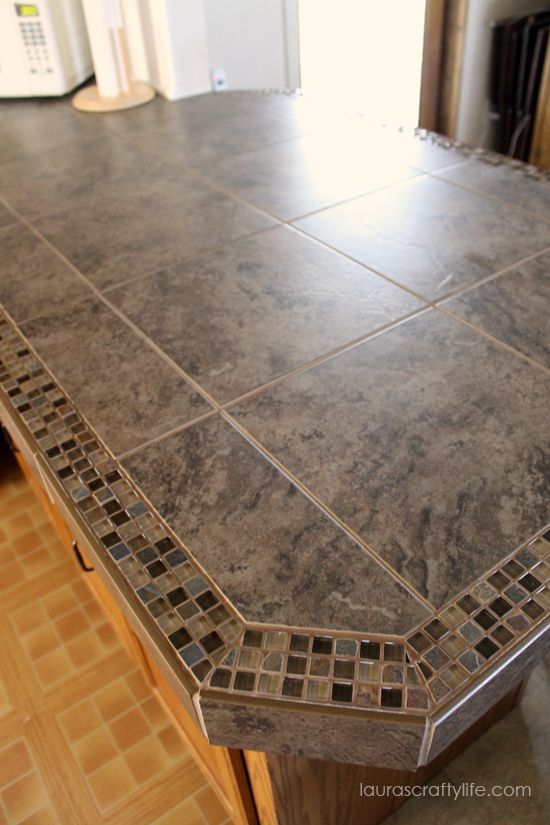
Source:- Pinterest
Tiles
Tile is making a comeback as a kitchen countertop material. They are simple to install and inexpensive. The majority of kitchen tiles are ceramic, but there are also tiles made of wood, glass, cement, stone, and bamboo. The look, durability, and cost differ depending on the material.
Tiles are typically square or rectangular, with distinct grout lines separating each piece. This results in an uneven top, which is undesirable if your countertop surfaces are also used for writing checks or doing schoolwork.
Tile countertop surfaces are only as long-lasting as the materials used to make them. If you do not clean the grout lines, crumbs, moisture, and grime can build.
